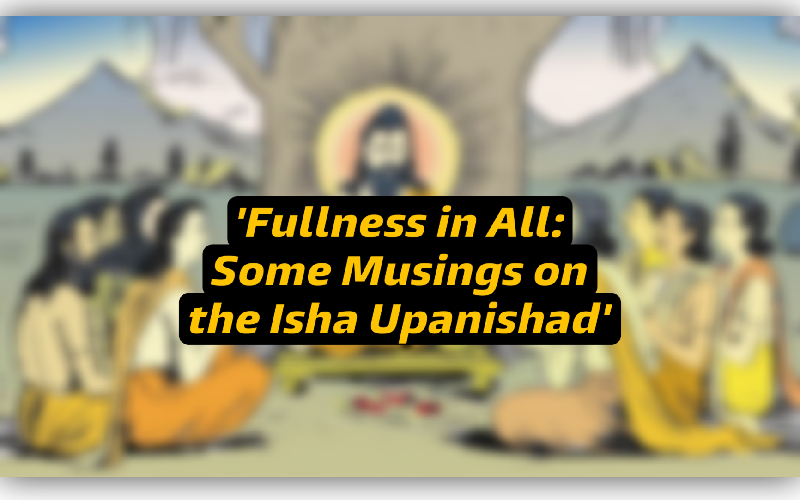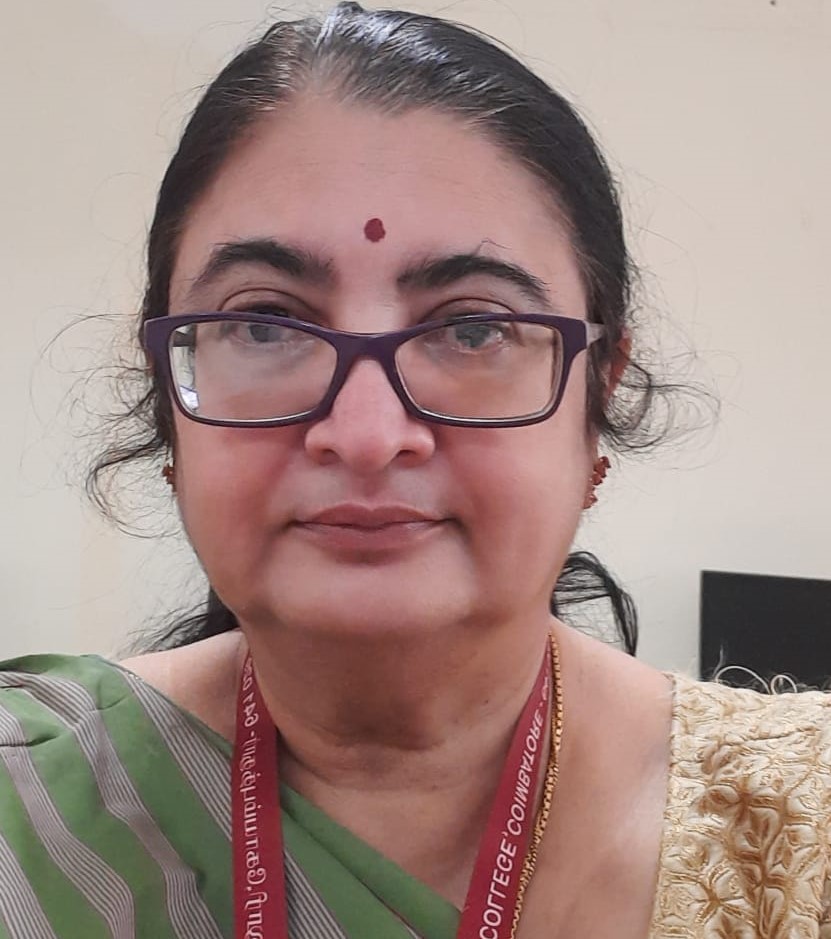
Quoting from the translation of Eknath Easwaran, “It rings change on a simple household work, ‘Purnam’, meaning full,”
All this is full. All that is full.
From fullness, fullness comes.
When fullness is taken from fullness,
Fullness still remains.
Fullness has auspicious meanings. It is reminiscent of the ‘Purnakumbam’ or the full pot which is used ceremoniously to welcome honoured guests. It implies that there is abundance in the universe, and one should not be greedy and avaricious. It reminds one of King Lear’s words, “ripeness in all”- signs of true maturity.
True fullness comes into one’s life only when one realises that everything comes from the Lord. “Covet nothing. All belongs to the Lord… Thus alone will you work with real freedom.” When one is not worried about getting material or even spiritual gain, more energy emanates. One is not disturbed by success or failure. This is similar to the thoughts expressed by Sri Krishna in the ‘Bhagavad Gita’. One should not be attached to one’s actions. That is detrimental to one’s progress. Everything one does is actually God’s actions. One should live one’s life like a drop of water on a lotus leaf. The same idea was later expressed by Swami Vivekananda in his speeches on Karma Yoga. Swamiji said that one can work really well only when one has set one’s ego aside. Such a concept is surprising to westerners who believe that achievements are manifestations of the ego. If one realises that the Lord alone is the mover, there is no place for the ego.
“Those who cling to the self are born again” says the Upanishad. Ego is an obstacle to salvation. Such people are denied immortality. The poem ends with an appeal: “May my life merge with the immortal/When my body is reduced to ashes.” For this knowledge of the Self is necessary.
It is noteworthy that the poem refers to Agni as the deliverer from evil and as a being who is a witness to all actions. The Sun, as in the Vedas, seems to be addressed. But at a deeper level, one realises that the Lord or the Truth is even brighter and more important than the all-powerful Vedic Sun. “May you remove your orb/So that I, who adore the true, may see the glory of truth.” The Sun is described thus “Even the very self as I”. This is the epitome of self-realization- Everything is the same as the Paramatma, the Supreme Self. The “I am that” of the Vedas is echoed here.
The philosophy of non-duality is paralleled by the recommendation of the path of moderation and balance later advocated by the Gita. Neither the world within nor the world without is the only reality. Neither action, nor surprisingly, meditation alone will suffice. “But those who combine action with meditation” attain immortality.
The Lord is neither transcendent nor immanent. He is not in the perceived world alone or inside the human body as Antaryami. The Lord is also not far away in a distant heaven. He is everywhere, in all beings and is the uniting principle:
“The Self is One... Without Self, never could life exist”.
All outward forms are but manifestations of the Lord. Multiplicity is an illusion.
“Those who see all creatures in themselves, and themselves in all” know no fear or grief. This is the basis of Ahimsa. One is reminded of Coleridge’s words about “all creatures great and small.”
The Isha Upanishad advocates an inclusive, harmonious, and productive existence. It is very practical in its approach, elevating neither a life of mediation nor of action alone, but a balance, which is essentially applicable to all societies at all times.
Dr. Shobha Ramaswamy
Head of the Department of English
Kongunadu Arts and Science College (Autonomous)
Coimbatore-651 029.

Dr. Shobha Ramaswamy is a college teacher who has written for various newspapers and magazines such as The New Indian Express, Women's Era, Femina and a number of children's magazines. Her English verse translation of Sri Andal's "Thirupavai" was serialized in Bhavan's Journal in the 1990s before being published twice in book form with commentary. She is deeply interested in Mythological and Archetypal Criticism, history and in spirituality. She is a die-hard Coimbatorean!
NEXT ARTICLE

At the southernmost tip of this mesmerising ensemble lies the majestic Great Nicobar Island, boasting an impressive landmass of about 910 square kilom...

Bharath has always been a land traversed by spiritual masters/ Guru since time immemorial. These spiritual masters have always upheld the core princip...

South India contains its fair share of unique pilgrimage centres. These divine places of worship have a prominent Sthala Purana, devoted followers, di...